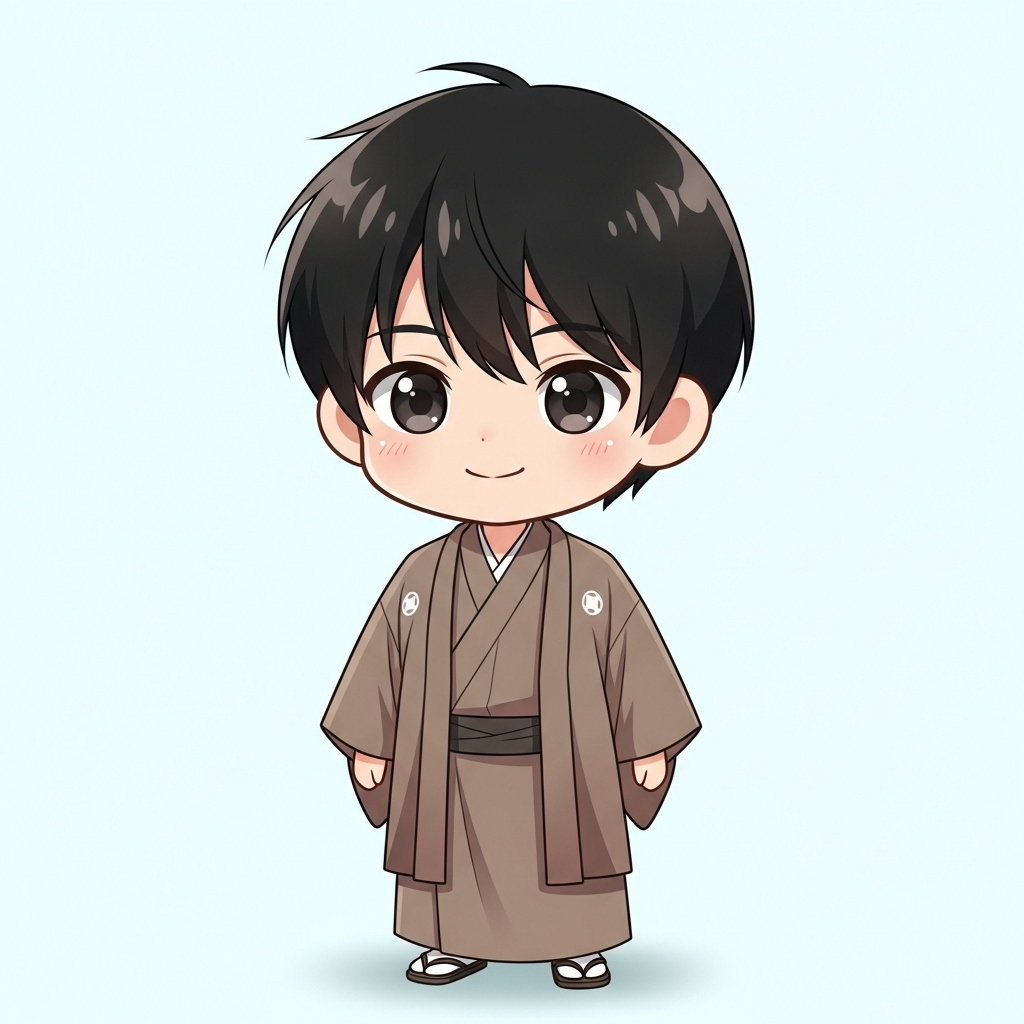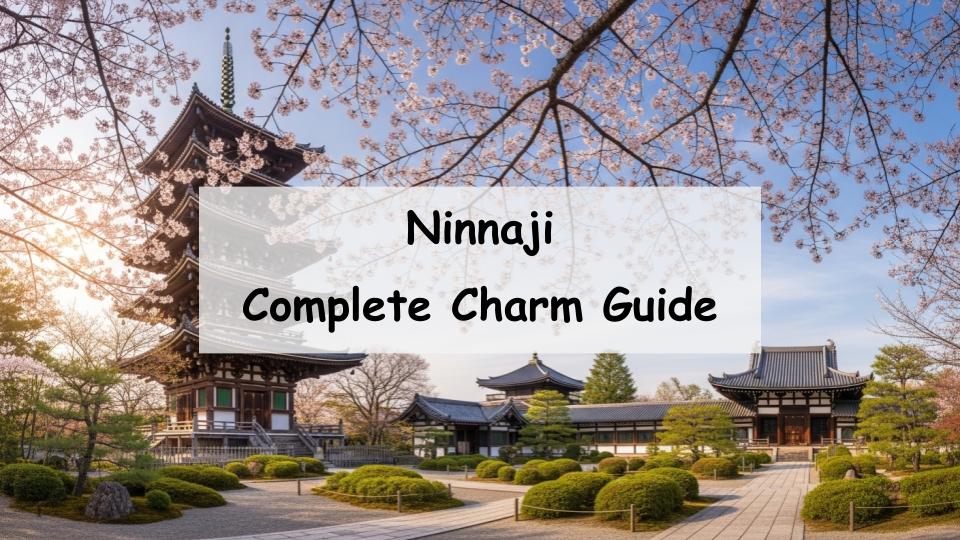If you’re planning a trip to Kyoto, you might find yourself wondering, “What makes Ninna-ji Temple special?” or “How is it different from other famous temples in Kyoto?” Simply put, Ninna-ji is a UNESCO World Heritage site that offers a rare combination of history, architecture, and natural beauty. In this article, we’ll explore the rich attractions of Ninna-ji, from its historical landmarks and seasonal beauty to how you can get there and what to expect. Whether you’re visiting for the first time or looking for deeper insights, this guide will help you make the most of your trip.
What Is Ninna-ji Temple? History and Background
The Origins and Founding of Ninna-ji
Ninna-ji Temple, located in Kyoto’s Ukyo Ward, is the head temple of the Omuro school of the Shingon sect of Buddhism. It was established in 888 by Emperor Uda and named after the era name “Ninna.” The temple has a unique imperial lineage, as Emperor Uda himself became its first head priest after abdicating the throne. Since then, many emperors and princes have served as abbots, giving the temple the status of a “monzeki,” or temple of imperial lineage.
Why Ninna-ji Became a World Heritage Site
In 1994, Ninna-ji was registered as part of the UNESCO World Heritage Site “Historic Monuments of Ancient Kyoto.” It earned this designation for its historical significance and its well-preserved examples of classical Japanese temple architecture and gardens. Structures like the Kondo (Main Hall) and Five-Story Pagoda are highly regarded as national treasures that embody the architectural and cultural spirit of ancient Japan.
Religious and Cultural Significance
Beyond its historical value, Ninna-ji serves as an important center for Buddhist practice and Japanese cultural preservation. It has influenced many aspects of traditional culture such as tea ceremony, calligraphy, and flower arrangement. The temple is a place not only for spiritual reflection but also for appreciating the depth of Japanese heritage.
Unique Features and Seasonal Charms of Ninna-ji
The Stunning Omuro Cherry Blossoms in Spring
One of Ninna-ji’s most iconic attractions is its Omuro-zakura, or Omuro cherry blossoms. These late-blooming cherry trees are shorter than average, allowing visitors to enjoy the blossoms at eye level. They usually reach full bloom in mid-April, making them a popular destination even after other cherry blossom spots have passed peak season. The view of the cherry blossoms with the Five-Story Pagoda in the background is particularly breathtaking.
Historical Buildings: The Five-Story Pagoda and Kondo
Ninna-ji is home to many remarkable architectural features. The Kondo (Main Hall), a designated National Treasure, was rebuilt in the early Edo period and exemplifies the elegant Momoyama style. The Five-Story Pagoda, built in 1644, stands tall as a symbol of the temple. These structures offer a glimpse into the craftsmanship and aesthetic of centuries past.
Seasonal Beauty and Garden Landscapes
Autumn Colors and Winter Scenery
In autumn, the temple grounds are covered in vibrant red and gold foliage, creating a dramatic and serene atmosphere. During winter, the snow-covered roofs and tranquil gardens transform Ninna-ji into a peaceful, otherworldly scene.
Enjoying the Gardens
Ninna-ji features several gardens, including a pond garden to the north and a dry landscape garden to the south. These spaces provide a quiet retreat where visitors can sit, reflect, and enjoy the harmony between architecture and nature.
Visitor’s Guide: What to See at Ninna-ji
Top 5 Must-See Spots
When visiting Ninna-ji, don’t miss the Kondo, Five-Story Pagoda, Omuro cherry blossoms, Kannon Hall, and the Imperial Messenger Gate. Each site tells a part of the temple’s long story and offers unique beauty and significance.
Best Photo Spots at Ninna-ji
For those who love photography, Ninna-ji offers many stunning compositions—especially during cherry blossom or autumn foliage seasons. Capturing the pagoda through the cherry trees or the Kondo framed by red maple leaves are among the most popular shots.
Admission and Visiting Hours
Ninna-ji is generally open from 9:00 AM to 5:00 PM, with final admission at 4:30 PM. The entrance fee is around 800 yen for adults, though it may vary during peak seasons like cherry blossom time. Some areas like the gardens and treasure hall may require separate fees.
Getting to Ninna-ji and Exploring Nearby
By Train or Bus
Ninna-ji is conveniently located just a short walk from Omuro-Ninnaji Station on the Keifuku Electric Railway (Randen). From Kyoto Station, you can also take a city bus, which takes about 40 to 50 minutes depending on traffic. It’s well-connected and easy to reach even for first-time visitors.
By Car and Parking Options
If you’re driving, Ninna-ji offers paid parking on-site. However, be aware that it can get crowded during spring and autumn. It’s best to arrive early to avoid delays. Also, local roads are narrow, so cautious driving is advised.
Other Attractions Nearby
Ninna-ji is surrounded by some of Kyoto’s top sightseeing spots, including Ryoan-ji and Kinkaku-ji (Golden Pavilion). It’s ideal to plan a half-day or full-day route that includes these temples. In certain seasons, pairing Ninna-ji with the Arashiyama area makes for a well-rounded day of cultural and natural exploration.
Before You Visit: Things to Know
Etiquette and Dress Code
As with any temple in Japan, respect and quiet behavior are appreciated at Ninna-ji. Avoid loud conversations and stay on marked paths. Modest clothing is recommended, and since some areas require removing shoes, wearing easy-to-remove footwear is helpful.
Best Times to Avoid the Crowds
To enjoy Ninna-ji in peace, aim for early morning or late afternoon visits. This is especially important during cherry blossom season, when the temple attracts large crowds. Arriving at the opening time often provides a more tranquil experience.
Annual Events and Festivals
Ninna-ji hosts a number of traditional events throughout the year, such as the Hanamatsuri (Flower Festival) in spring and moon-viewing gatherings in autumn. These events offer a deeper look into Buddhist rituals and Japanese seasonal customs, adding value to your visit.
Conclusion: Experience History and Nature at Ninna-ji
Key Takeaways and Highlights
Ninna-ji is a temple where you can truly feel the passage of time and the essence of Japanese spirituality. With its historical buildings, scenic gardens, and seasonal beauty, it offers a fulfilling and enriching experience for any visitor.
Tips for First-Time Visitors
If it’s your first time at Ninna-ji, plan ahead by checking opening hours, seasonal events, and crowd forecasts. Incorporating nearby sights into your itinerary can make your visit even more memorable. Whether you’re there for photography, history, or peaceful reflection, Ninna-ji promises an unforgettable journey through Kyoto’s cultural heritage.
A Message from the Guide

I was impressed by the peaceful and calm atmosphere and the spacious grounds.








Comment